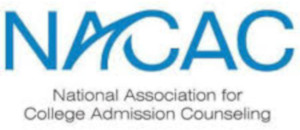As anyone with a Ph.D. in physics can inform you, “dark matter is composed of particles that do not absorb, reflect, or emit light.” I mean, duh. What else would dark matter be? Admittedly, “dark matter is material that cannot be seen directly.” But there’s lots of stuff in that category. Neither aptitude, loneliness, nor love can be properly measured, but there’s plenty of evidence that these hypothetical constructs exist. Dark matter is out there. You can’t see it, but its effect on the galaxies is pronounced.

Alcohol related deaths are easier to recount. The National Institute on Alcohol Abuse and Alcoholism reports 88,000 annual alcohol-related deaths. Only tobacco and couch-potatoness—“poor diet and physical inactivity”—cause more preventable early exits. Everyone grieves the loss of a loved one or family friend killed by a drunk driver. The unnecessary tragedies show no signs of abating. Dark matter is everywhere, but hard to find. Drunk drivers are everywhere and are easily perceived, especially on Spring Break–defined as “an opportunity for socially awkward adolescents (read: every adolescent) to lose their inhibitions by remaining schnockered for several days during which they can remain intoxicated and be physically intimate with similarly impaired peers frequently on the beach near your house, where did you think all those red solo cups on your lawn came from anyway, outer space?

A perusal of social media last year at this time would imply that festive imbibing and coupling were ubiquitous and abundant—two words meaning that each and every college student from around the country descended on South Florida to guzzle beer and urinate on your neighbor’s hedge. I would never presume to suggest that there are any advantages to sheltering in place, but if there were an upside to the virus, the absence of hoards of marauding young adults might be one.
But what of the students who aren’t participating in the Bacchanalian revelry? What of the 22-year-old who is spending the week bundled in an overcoat trudging to the library studying for the MCAT? I don’t know a lot about her. I don’t understand, for example, why she continues to study hour after hour when most recent practice exam suggests that she will score in the 90th percentile nationwide. Why she continues to memorize obscure data to improve her result is beyond me. Just the same, I will make three inferences about her:

- It won’t be too many years before the plastered thudpuckers who can’t spell organic chemistry never mind set the curve in the course will be asking her for a job.
- She understands that present mirth hath present laughter, that she is better off in the long run, that her incessant studying and subsequent 95th percentile MCAT score will pay off in every meaningful way.
- In the meantime, her loneliness is like a physical presence making her wonder if, in the market place for boyfriends, she is at a disadvantage. She has friend friends, but none of the romantic persuasion. How will she make schmoochie connections if she is aware that everybody else is as blotto as they are undesirable? Her solitude makes her sad.

Will her sobriety and studiousness pay off? Of course. For one thing, she is less likely to die in a car with a driver who has drunk enough vodka to drown a small moose and whose blood alcohol level is significantly in excess of the legal limit for a 300-pound man. But in the meanwhile, what the heck? Isn’t everybody else having a life? Aren’t the majority of young adults having endless fun even in these sequestered times? Isn’t there a monopoly on earthly pleasures and joy a thousand sunny miles to the south?
No. Not even close. As always, comfort can be taken from statistics. (Numbers are your friends; you can count on them. Sorry.) Again, according to the National Institute of Alcohol Abuse and Alcoholism, if “54.9 percent of full-time college students ages 18-22 drank alcohol in the past month,” then 45.1 percent of young adults in that demographic did not.
There is five times as much dark matter in the universe as there is normal matter. Similarly, “36.9 percent of college students ages 18-22 reported binge drinking in the past month.” Which means that my studious pre-med will be fine. She will find somebody. Her life partner might be right there in the library in a carrel just on the other side of those stacks. Because there are 62.1 percent of college kids who aren’t barfing and regretful the next morning.
Like dark matter, hard to identify but in the majority, the kids you want your kid to hang with are out there. They might not be making videos of themselves drinking three beers in three minutes. They might be harder to see huddled against the wind on their way to study. But they most certainly exist. As we come to understand more about the nature of our universe and as these 18-22-year-olds mature to become thirty-somethings with more emphasis on career and less alignment with alcohol, there is a whole new and wonderful world waiting for the ones who made good, if temporarily lonely, decisions.



